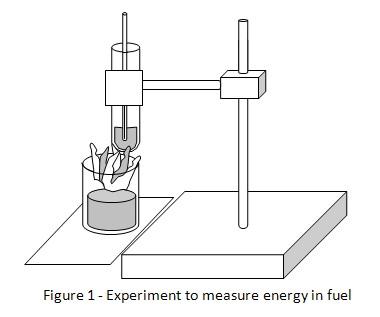Hypothesis
Bioethanol has a lower energy density than gasoline. Hence, bioethanol will cause a smaller increase in water temperature when burned.
Overview
Biofuel
Biofuel is fuel that is obtained from biomass. Examples of biofuel are bioethanol, which is derived from the fermentation of plant material, as well as biodiesel, which is made from animal fat or vegetable oil. The use of biofuel is very popular in both the US and Brazil.
The most common biofuel in use today is bioethanol. It is a form of alcohol that is produced from the reaction of enzymes and microorganisms upon starch, sugar or cellulose. The sugar or starch used in the fermentation process is obtained from wheat, sugar cane, corn and other similar plants.
Bioethanol can be used to fuel cars. It can also be used as a substitute for gasoline, or mixed with gasoline. Usually, a 15% proportion of bioethanol is mixed together with gasoline, to be used as fuel in cars. Bioethanol has a lower energy density than gasoline. This means that a greater volume of bioethanol is required to produce the same amount of energy as gasoline. However, bioethanol has a higher octane rating, which indicates a higher level of thermal efficiency and better engine compression ratio.
Scientific Terms
Biofuel, biomass, bioethanol, enzyme, fermentation, microorganisms
Conclusion
The hypothesis that bioethanol has a lower energy density than gasoline, and therefore will cause a smaller increase in water temperature when burned, has been proven to be true.
The rising price of oil has increased the demand for biofuel as an alternative fuel. In 2008, about 1.8% of fuel used in transportation was sourced from biofuel. However, the increasing production of biofuel has raised concerns regarding the rising price of animal feed and livestock.
Also consider
The experiment may be repeated by using different types of biofuel, such as biodiesel.
References
Biofuel - http://en.wikipedia.org/wiki/Biofuel
Fuels - http://www.educationalelectronicsusa.com/c/fuels-VII.htm
Related videos
Hey there! Here are some awesome videos about this science project that we think you'll really like. They're not only super fun, but they'll also help you learn more about the science behind the project. So sit back, relax, and get ready to have some fun!!



